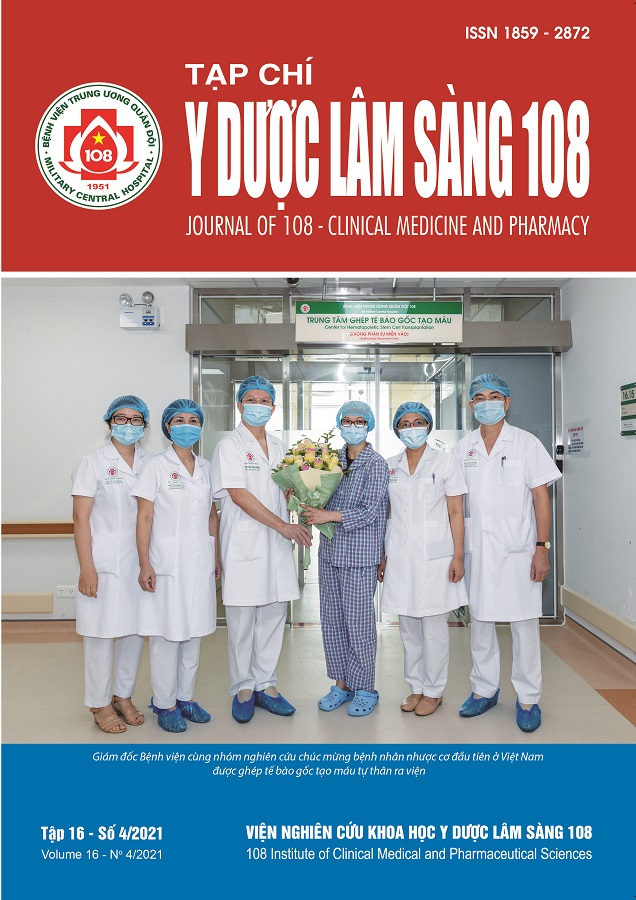Technical specification and safety of prostate artery embolization for treatment of benign prostatic hyperplasia
Main Article Content
Keywords
Abstract
Objective: To statistic the clinical features, techniques and safety of the prostate artery embolization for treatment of benign prostatic hyperplasia. Subject and method: A clinical intervention study on 66 patients with benign prostatic hyperplasia receiving treatment of prostate artery embolization at Frienship Hospital from May 2015 to June 2019. Result: The mean prostate volume of patients in the study was 62.8 ± 29.86mm3, the mean IPSS score was 30.8 ± 2.36, the mean QoL score of 4.7 ± 0.46 points. The technical success rate of prostate artery embolization was 100%, the rate of complete embolization of the prostate artery on both pelvis sides was 83.3%, and the one side embolization was 16.7%. The rate of complications during the intervention was 0%. The rate of complications after the intervention was 31.8%, of which mainly complications were mild and moderate, with 01 case of severe complications accounting for 1.5%. Conclusion: Prostate artery embolization is a safety treatment for benign prostatic hyperplasia.
Article Details
References
2. Camara-Lopes G et al (2013) The histology of prostate tissue following prostatic artery embolization for the treatment of benign prostatic hyperplasia. Int Braz J Urol 39(2): 222-227.
3. Carnevale FC et al (2017) Anatomical variants in prostate artery embolization: A pictorial essay. Cardiovasc Intervent Radiol 40(9): 1321-1337.
4. Bhatia S et al (2017) Prostate artery embolization via transradial or transulnar versus transfemoral arterial access: Technical results. J Vasc Interv Radiol 28(6): 898-905.
5. Goncalves OM et al (2016) Comparative study using 100 - 300 versus 300 - 500 mum microspheres for symptomatic patients due to enlarged-bph prostates. cardiovasc Intervent Radiol 39(10): 1372-1378.
6. Carnevale FC et al (2017) Recurrence of lower urinary tract symptoms following prostate artery embolization for benign hyperplasia: Single center experience comparing two techniques. Cardiovasc Intervent Radiol 40(3): 366-374.
7. Bilhim T et al (2013) Unilateral versus bilateral prostatic arterial embolization for lower urinary tract symptoms in patients with prostate enlargement. Cardiovasc Intervent Radiol 36(2): 403-411.
8. Pisco JM et al (2016) Medium and long-term outcome of prostate artery embolization for patients with benign prostatic hyperplasia: Results in 630 patients. J Vasc Interv Radiol 27(8): 1115-1122.
9. Moreira AM et al (2017) A Review of adverse events related to prostatic artery embolization for treatment of bladder outlet obstruction due to BPH. Cardiovasc Intervent Radiol 40(10): 1490-1500.
10. Kisilevzky N, Laudanna Neto C, and Cividanes A (2016) Ischemia of the glans penis following prostatic artery embolization. J Vasc Interv Radiol 27(11): 1745-1747.
 ISSN: 1859 - 2872
ISSN: 1859 - 2872
